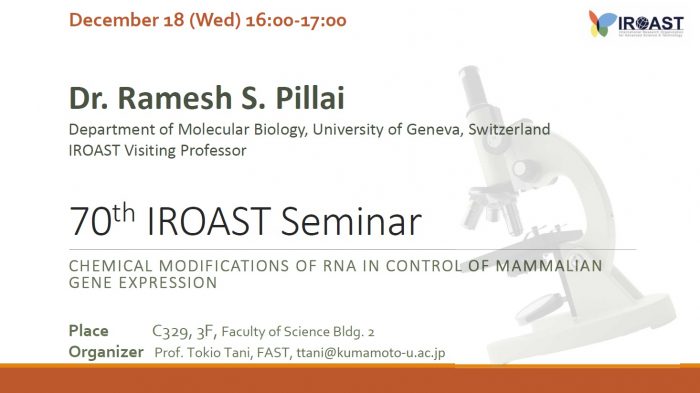- HOME
- SYMPOSIUM & SEMINAR
- 70th IROAST Seminar
SYMPOSIUM & SEMINAR
70th IROAST Seminar-Chemical modifications of RNA in control of mammalian gene expression-held on December 18, 2019

Abstract
N6-methyladenosine (m6A) is an essential internal RNA modification that is critical for gene expression control in most organisms. They are catalyzed by RNA methyltransferases 'writers' on specific targets, while protein 'readers' with a YTH domain recognize the m6A marks to mediate molecular functions like RNA splicing, mRNA decay and translation control. The functional relevance of these marks is demonstrated by the ability of RNA demethylase 'erasers' to remove this mark, pointing to potential reversibility and regulation. Here we describe the crystal structure of the writer human METTL16 to reveal a classical methyltransferase domain but with an extra N-terminal module that is essential for catalysis. Together, they form a deep-cut groove lined by highly conserved positively charged residues that are essential for RNA binding and methylation activity. When given a random pool of RNAs, METTL16 selects structured RNAs for m6A methylation. We demonstrate that mouse Mettl16 is essential for early embryonic development, and acts via regulation of the SAM synthetase Mat2a mRNA. Our results highlight the pivotal role of an m6A RNA methyltransferase in facilitating early developmental decisions via regulation of SAM availability.
 Prof. Pillai
Prof. Pillai
 |
 |
| Audience | Prof. Tani-Organizer |

